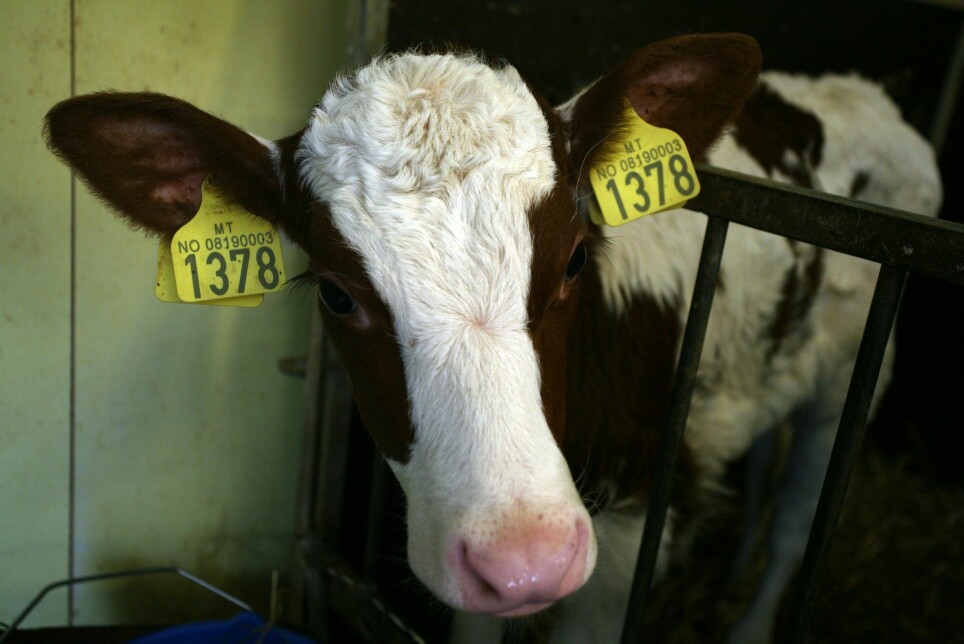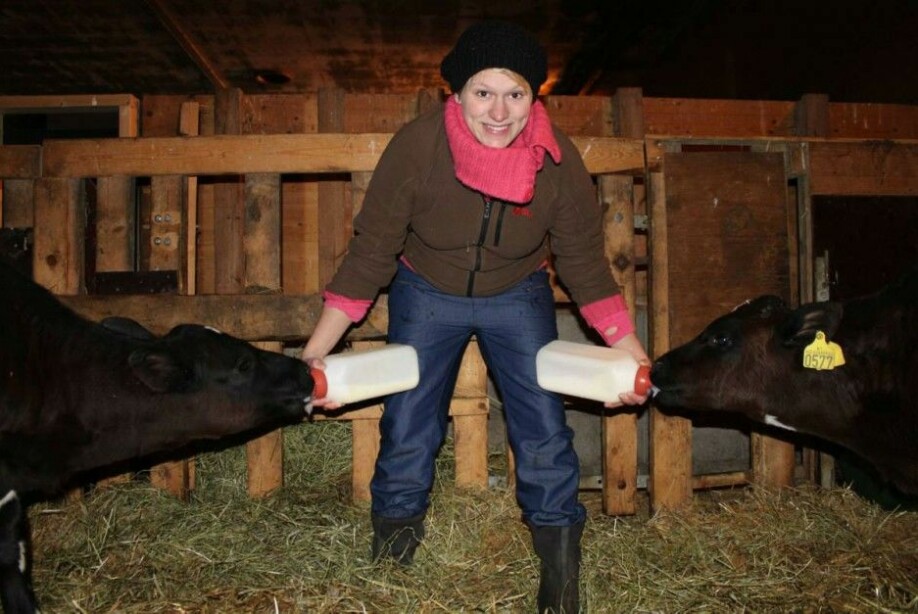
Calves not allowed to stay with their mother are more stressed and grow less well
Consumers of milk and cheese want cows and calves to stay together.
The most common practice on Norwegian farms is for a new-born calf to be taken from its mother immediately.
The cow is allowed to lick the baby dry after birth, but then the farmer takes the calf to a separate pen where it is alone for a few weeks and bottle fed. The calf is not allowed to have contact with its mother.
Organic farms have stricter animal welfare requirements, but even there mother and calf do not spend much time together. New-born calves are removed from the mother after three days.
Consumers – those of us who buy cow's milk and cheese – do not think that calves should be separated from their mother so early. Surveys from Norway and other countries show this to be the predominant sentiment.
More dairy farmers increasingly believe that mother and child should be allowed to remain together as well.
Less stress when together
In a new report from Norsøk, the Norwegian Centre for Organic Agriculture, researchers interviewed ten farmers who do not separate mother and calf right away. On some of the farms the calves were with the mother for a few weeks, on others for several months.
The farmers said that the calves become calmer when they are not separated from the mother. They grow better and develop a healthier hair coat.
The cows are also better off, because they become stressed when they lose their calf.
“The most important thing for a cow is to be allowed to be the mother of her calf,” said one farmer in the survey. Another said that the calf gave the cow something to do and provided purpose to her life.
Still, calves are removed from their mothers on most Norwegian farms.
Old practice
Julie Føske Johnsen works at the Norwegian Veterinary Institute. She was not involved in the new survey, but she also studies the well-being of calves.
She explains why the common practice is for the calf to be separated from the cow immediately after birth.
“The farmers want to make sure that the calves get enough milk and that they don’t become infected by disease. That’s why the calves don’t have any contact with the other animals in the barn,” says Føske Johnsen.
She emphasizes that the farmers do a very good job with their calves.
Norwegian law states that calves may not be left alone in a pen for more than eight weeks. But many farmers let them out sooner, according to Føske Johnsen.
Then they are allowed to be with other calves in a separate area but are still not allowed to have contact with their mothers.
The practice of separating new-born calves from their mothers is an old one.
Some farmers, however, are open to new practices and let the animals stay together. Because we now know more about the animals’ well-being.
Bond between cow and calf is important
“We’ve learned a lot about the calves' needs through research and practices,” says Føske Johnsen.
“Now we know that the calves benefit from being with other calves and drinking their fill. They grow faster and thrive better when they drink milk straight from the mother’s udder.”
The closeness, licking and play between mother and calf are also important, the researcher says.
“The bond between mother and calf is as important as it is for us humans. The cow takes good care of its offspring. When they’re able to stay together, they get to do what’s natural for them,” says Føske Johnsen.
But how do scientists know what is natural for cows and calves, given that they have been domesticated for hundreds of years?
- RELATED: Read more about Føske Johnsen's research in the article She’s given birth to six calves before — but now she finally gets to be a mother
What is the right amount of time with mom?
“We have to look at old studies from the time when there were wild herds with cows, oxen and calves. In nature, cows and calves stayed together for up to 10 months,” says Føske Johnsen.
She plans to study how barns can be rebuilt to enable cows and calves to have contact.
“The first weeks after birth are the most important. The calf needs milk and contact with the mother frequently. The calf isn’t independent,” she says.
Eventually the calf will learn to fend for itself and become a ruminant that feeds on grass and hay.
So how do researchers find out what's best for calves?

Two kinds of call sounds
“We examine how much the calves grow, and we weigh them before and after they are separated from the mother. We also monitor how much they bleat,” Føske Johnsen explains.
If the calf is stressed or does not get enough milk, it bleats a lot and loses weight.
She says there are two types of call sounds. Stressed calves bleat with their mouths open. That means it is complaining, frustrated or hungry.
When the calf moos with its mouth closed, it means that it knows where its mother is and that it’s not stressed.
- RELATED: Happy farmer, happy cow
More knowledge about what’s best
The cows call when they are separated from their calf, too. Some bellow a lot, while others take it easy, according to Føske Johnsen.
The new Norsøk report also mentions that the animals become stressed and moo a lot when they are separated. The calves may eat and grow less and can develop stomach discomfort.
The farmers who let the calves remain with their mothers say that the animals are better off and that the cows take good care of their young. But this approach can also involve more work. Even if they do not have to feed the calves themselves, they have to pay closer attention to them. The calves can injure themselves when they are in a herd with other animals, and they can be infected by disease.
The need to learn more is spurring Føske Johnsen to research what happens when a cow and her calf stay together for eight weeks.
“Farmers and cows are both concerned with what’s good for the calves. So it’s important to build our knowledge base about what works best,” says Føske Johnsen.
Translated by: Ingrid P. Nuse
References:
Ku og kalv sammen i melkeproduksjon (Cow and calf together in milk production). Interviews with milk producers. NORSØK Report, volume 6, number 15, 2021.
Interview with Julie Føske Johansen, researcher at the Norwegian Veterinary Institute on prosjektet Succeed (Project Succeed).
———
Read the Norwegian version of this article at forskning.no
































